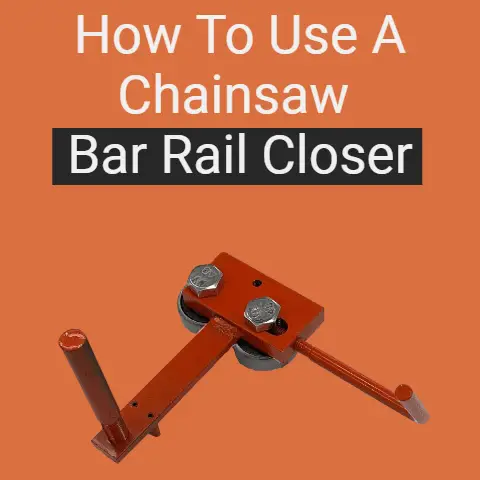Husqvarna 235 Carburetor (3 Fixes for Better Performance)
Benefits of Chainsaw Maintenance
You know how maintaining your health makes you feel more energetic and productive? Well, the same principle applies to your chainsaw. By keeping it in top shape, you not only enhance its efficiency but also extend its lifespan. Plus, who wants to deal with a chainsaw that sputters when you’re halfway through a job? Let’s explore how you can keep your Husqvarna 235 carburetor running like a dream.
Understanding the Husqvarna 235 Carburetor
The carburetor in your Husqvarna 235 plays a crucial role by mixing the right amount of air and fuel needed for combustion. If it’s not working properly, you may experience issues like difficulty starting or poor engine performance. Let’s look at what can be done to fix these issues and improve performance.
Equipment and Prerequisites
Before diving into the fixes, here’s what you’ll need:
- Tool Kit: A set of screwdrivers (both flathead and Phillips), socket wrench set
- Carburetor Cleaner: A high-quality aerosol cleaner is essential for removing deposits
- Replacement Parts: Gaskets, diaphragms, O-rings—ensure they’re compatible with the Husqvarna 235
- Safety Gear: Gloves to protect your hands, safety goggles for eye protection
Having a basic understanding of small engine mechanics is beneficial, but don’t worry if you’re new to this. I’ll guide you through each step.
Fix 1: Cleaning the Carburetor
Over time, dirt, debris, or old fuel can clog your carburetor, affecting performance. Here’s how to clean it thoroughly:
Step-by-Step Guide
- Remove the Air Filter: Begin by taking off the air filter cover and removing the filter itself. This provides access to the carburetor.
- Disconnect the Fuel Line: Carefully detach the fuel line from the carburetor. Be ready with a small container to catch any fuel spills.
- Remove the Carburetor: Unscrew the bolts holding the carburetor in place. Keep all screws and parts organized.
- Spray Carburetor Cleaner: Use an aerosol cleaner to spray all passages in the carburetor. Ensure thorough cleaning to remove any build-up.
- Inspect for Damage: Check for any damaged gaskets or diaphragms. Replace them if they show signs of wear.
- Reassemble: Once clean and inspected, reassemble the carburetor, reconnect fuel lines, and replace the air filter.
Safety Warning: Always work in a well-ventilated area when using carburetor cleaner to avoid inhaling harmful fumes.
Detailed Explanation
The process of cleaning a carburetor is akin to giving your chainsaw a fresh start. Over time, small particles and debris can hinder its performance. By ensuring each component is clean and free from obstructions, you allow the engine to breathe better and perform optimally.
Insight Box: Did you know? Regular cleaning of your carburetor can increase fuel efficiency by up to 20%!
Fix 2: Adjusting Carburetor Settings
A misadjusted carburetor can lead to engine sputtering or stalling. Let’s look at how to adjust those settings properly.
Step-by-Step Guide
- Locate Adjustment Screws: Find the ‘H’ (high speed) and ‘L’ (low speed) screws on the carburetor.
- Start the Chainsaw: Let it warm up for a few minutes. A warm engine provides a more accurate adjustment environment.
- Adjust Low Speed (L) Screw: Turn it clockwise until the engine starts to falter, then counterclockwise until it runs smoothly without stalling.
- Adjust High Speed (H) Screw: Rev up the engine and turn the screw clockwise until you achieve maximum RPM without over-revving.
- Fine-Tune Idle Speed Screw: Adjust this screw until you achieve a smooth idle without chain movement.
Tip Box: Use a tachometer if you have one to ensure precise RPM settings for optimal performance.
Advanced Adjustments
For those who want to delve deeper into fine-tuning:
- Consider adjusting the idle mixture screw for even smoother idling.
- If your chainsaw is used frequently at varying altitudes, note that altitude affects engine performance and may require periodic adjustments.
Insight Box: Engines tend to run richer at higher altitudes due to reduced air density; making adjustments for altitude can improve performance significantly.
Fix 3: Replacing Worn Parts
Worn or damaged parts can lead to inefficiencies. Identifying and replacing these parts is essential for optimal performance.
Step-by-Step Guide
- Inspect Diaphragms and Gaskets: Remove these components from the carburetor. Look for cracks or stiffness which might indicate wear.
- Replace as Needed: Purchase replacement kits specific for Husqvarna 235 models to ensure compatibility.
- Check Fuel Lines: Ensure they’re not cracked or leaking. Replace if necessary.
- Reassemble and Test: Once replaced, reassemble everything and test your chainsaw’s performance.
Warning Box: Always use genuine replacement parts to maintain chainsaw performance and safety standards.
Additional Considerations
When replacing parts:
- Consider replacing spark plugs if they appear dirty or worn.
- Regularly check fuel filters and replace them as needed.
- Ensure all seals are tight to prevent air leaks which can affect engine performance.
Insight Box: Using genuine parts can extend your chainsaw’s life by maintaining its integrity and functionality.
Troubleshooting Tips
Even with regular maintenance, you might encounter some issues. Here are some common problems and solutions:
- Chainsaw Won’t Start: Double-check fuel lines for clogs or leaks.
- Engine Stalls at High Speed: Re-adjust high-speed screw or inspect spark plug.
- Poor Acceleration: Clean air filter regularly; it might be clogged.
- Excessive Smoke Emission: Check for excessive oil mix in fuel or blocked exhaust.
Expert Advice
As someone who’s tinkered with chainsaws for years, one piece of advice I’d give is always listen to your chainsaw. Odd noises or changes in performance are usually early signs something needs attention.
Important Safety Precautions
Working with chainsaws involves risks, so always prioritize safety:
- Wear protective gear including gloves and goggles.
- Ensure you work in a well-lit area.
- Keep bystanders away from your work area.
- Use tools properly to avoid accidents.
Safety Insight
Remember, a well-maintained chainsaw not only performs better but is also safer to use. Regular checks can prevent accidents caused by mechanical failures.
Common Questions and Concerns
Addressing some FAQs can alleviate common concerns:
1. How often should I clean my chainsaw’s carburetor?
I recommend cleaning it every few months or whenever you notice performance issues or after prolonged storage periods.
2. What are signs of a bad carburetor?
Look out for poor starting, rough idling, stalling at high speeds, or inconsistent power outputs as common indicators.
3. Can I use alternative fuel types?
Stick with manufacturer-recommended fuels to avoid damaging your engine and ensure optimal performance.
4. Why does my chainsaw lose power under load?
This might be due to incorrect carburetor settings or a clogged air filter restricting airflow.
5. Is professional maintenance necessary?
Advanced Tips for Enthusiasts
For those looking to further enhance their chainsaw experience:
- Invest in a digital tachometer for precise tuning.
- Consider keeping a detailed logbook of maintenance activities; this helps track patterns or recurring issues.
- Explore premium oils that offer better lubrication properties especially if you’re using your chainsaw frequently or in harsh conditions.
Insight Box
Did you know? Consistently using quality oils can reduce wear on internal components by up to 30%, extending overall engine life!
Conclusion
Maintaining your Husqvarna 235 properly ensures it remains a reliable tool ready for any task you throw its way! Regular upkeep not only enhances performance but also prioritizes safety—a win-win situation if you ask me!
Remember these steps next time you notice anything off about your machine—it might just save both time (and possibly money). Whether cleaning out clogs from inside those tiny passages within its heart (your trusty ‘ol carbie) or simply swapping out worn-out components like gaskets & diaphragms before they cause bigger problems down line…you got this!
Keep cutting safely & efficiently!






